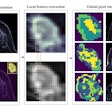Leaving out axillary surgery could be an option for women with small breast cancers and a negative result on ultrasound of the axillary lymph nodes, suggest Italian findings published September 21 in JAMA Oncology.
Researchers led by Oreste Gentilini, MD, from San Raffaele Scientific and Research Hospital in Milan found that in cases of small breast cancers with negative ultrasound findings for the axillary lymph nodes, skipping axillary surgery was noninferior to sentinel lymph node biopsy.
“These results suggest that patients with these features can be safely spared any axillary surgery when the lack of pathological information does not affect the postoperative treatment plan,” Gentilini and co-authors wrote.
Sentinel lymph node biopsy is the go-to method for axillary node staging of women with early breast cancer. However, the researchers questioned whether it was necessary since surgery for examining axillary nodes is “not performed with curative intent.”
Gentilini and colleagues wanted to find out whether skipping axillary surgery is noninferior to sentinel lymph node biopsy in women with small breast cancer and a negative preoperative ultrasound result on axillary lymph nodes. They used data from the SOUND (Sentinel Node vs. Observation After Axillary Ultra-Sound) trial. The trial, which took place between 2012 and 2017, was a prospective noninferiority phase-three randomized clinical trial conducted in Italy, Switzerland, Spain, and Chile.
The team included data from 1,405 women with a median age of 60. Of these, 708 were randomized into a biopsy group and 697 were randomly placed into the no-axillary-surgery group. The team reported that the median tumor size was 1.1 cm, with a range of 0.8 to 1.5 cm. Additionally, 1,234 of the women had estrogen receptor-positive ERBB2 nonoverexpressing breast cancer, and 97 women (13.7%) in the biopsy group had positive axillary lymph nodes.
The researchers further reported that the median follow-up for disease assessment was 5.7 years in the biopsy group and 5.7 years in the no-surgery group. They found that the five-year distant disease-free survival and incidence rates were similar between the two groups.
| Comparison between biopsy, no-surgery groups | ||
|---|---|---|
| Biopsy | No surgery | |
| Distant disease-free survival | 97.7% | 98% |
| Locoregional relapses | 1.7% | 1.6% |
| Distant metastases | 1.8% | 2% |
| Deaths | 3% | 2.6% |
For the distant disease-free survival rate, noninferiority achieved statistical significance (p = 0.02).
The study authors also reported that ultrasound was able to rule out the presence of relevant nodal burden, which clinical evaluation alone may not identify.
“Despite the need for further research to improve imaging methods, the multi-institutional nature of our study supported the wide reproducibility of ultrasonography as a simple and inexpensive method that can be routinely applied in the preoperative workup of all patients with breast cancer,” they wrote.
The authors also suggested that using these data in future guidelines could lead to a substantial decrease in healthcare costs.
The full study can be found here.



















